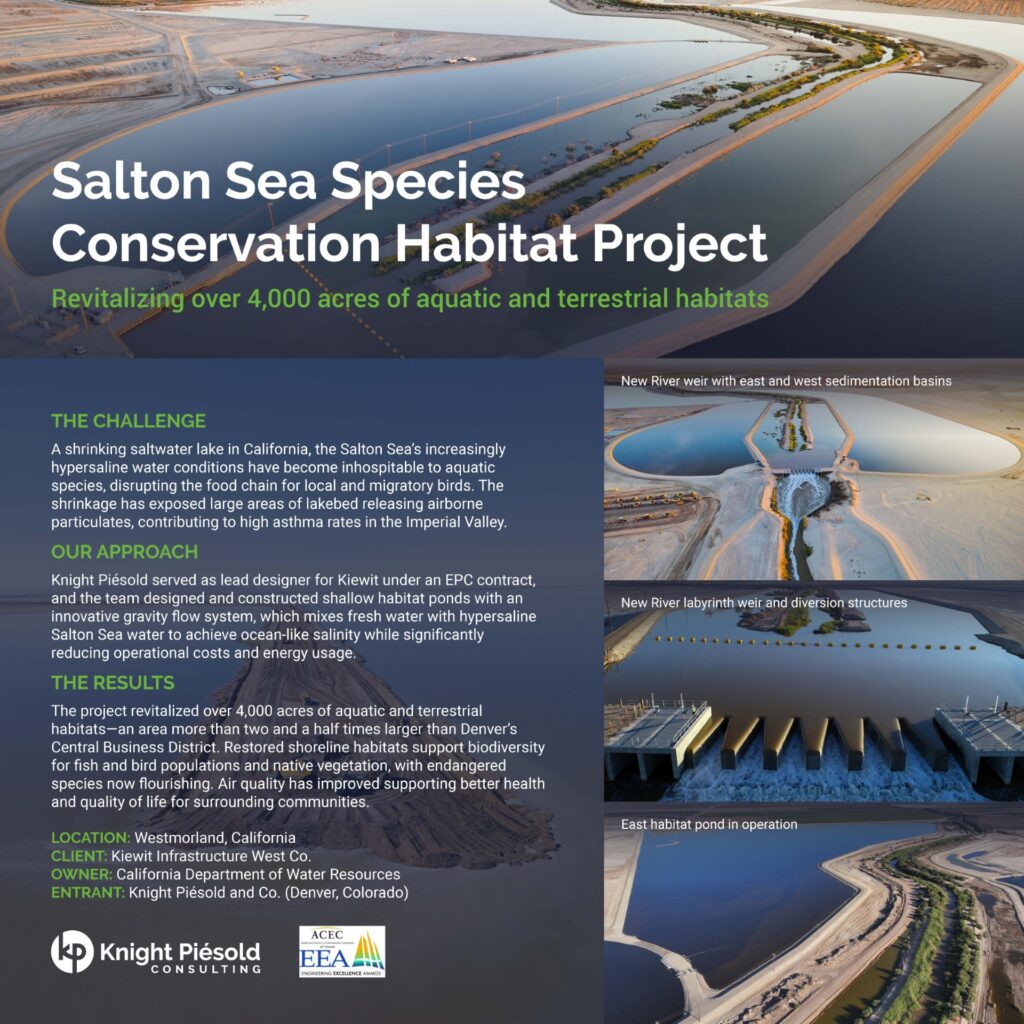The Salton Sea Species Conservation Habitat Project revitalized over 4,000 acres of aquatic and terrestrial habitats along the shores of the Salton Sea – an area more than two and a half times larger than Denver’s Central Business District. The Salton Sea, a saltwater lake situated approximately 250 feet below sea level, has been shrinking for decades due to reduced inflows from water conservation efforts and water delivery restrictions in the area.
This large-scale environmental restoration project addresses critical issues surrounding California’s largest lake, including:
- Countering hyper saline water conditions – now over 50% saltier than the Pacific Ocean and projected to reach 300 grams per liter (g/L) within 15 years – that have become inhospitable to most aquatic species like the endangered pup fish.
- Restoring lost aquatic and terrestrial habitats to rebuild the food chain for local and migratory birds that frequent the area.
- Improve air quality through dust suppression of exposed lake bed sediments, to mitigate health risks for Imperial Valley residents suffering from elevated asthma rates.
Knight Piésold served as lead designer for Kiewit under an EPC contract, and the team designed and constructed shallow habitat ponds with an innovative gravity flow system, which mixes fresh water with hyper saline Salton Sea water to achieve ocean-like salinity (20 to 40 g/L) while significantly reducing operational costs and energy usage.
The team overcame significant geotechnical challenges with design and construction on exposed lake bed sediments in a high seismic, highly saline environment, successfully delivering the project within budget and schedule. The project supports biodiversity for fish and bird populations and native vegetation, with endangered species now flourishing in these restored shoreline habitats. The project also improved air quality for better health and quality of life for residents in surrounding communities.
As a proof-of-concept project, the team established cost-effective construction methods that are now guiding ongoing restoration efforts. Two expansion projects will add another 7,800 acres of habitat, demonstrating the scalability and effectiveness of the design approach.
